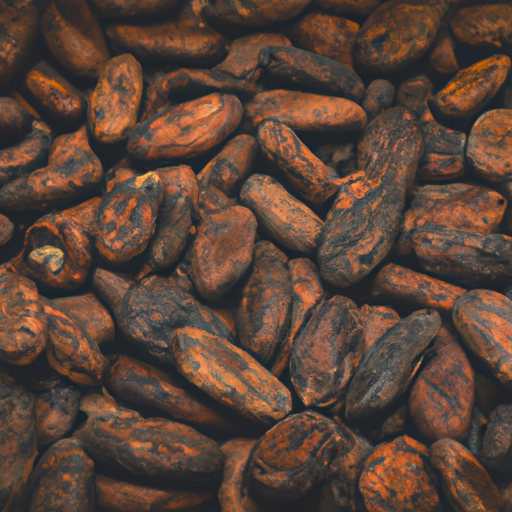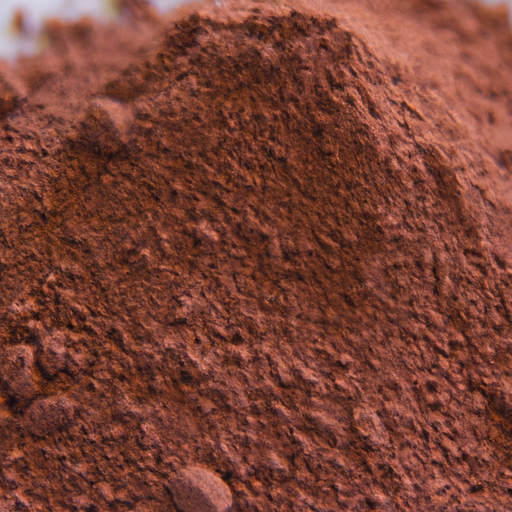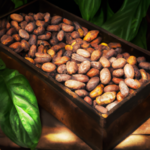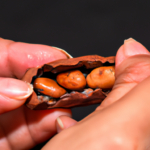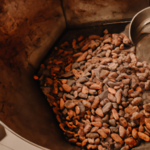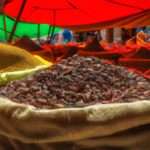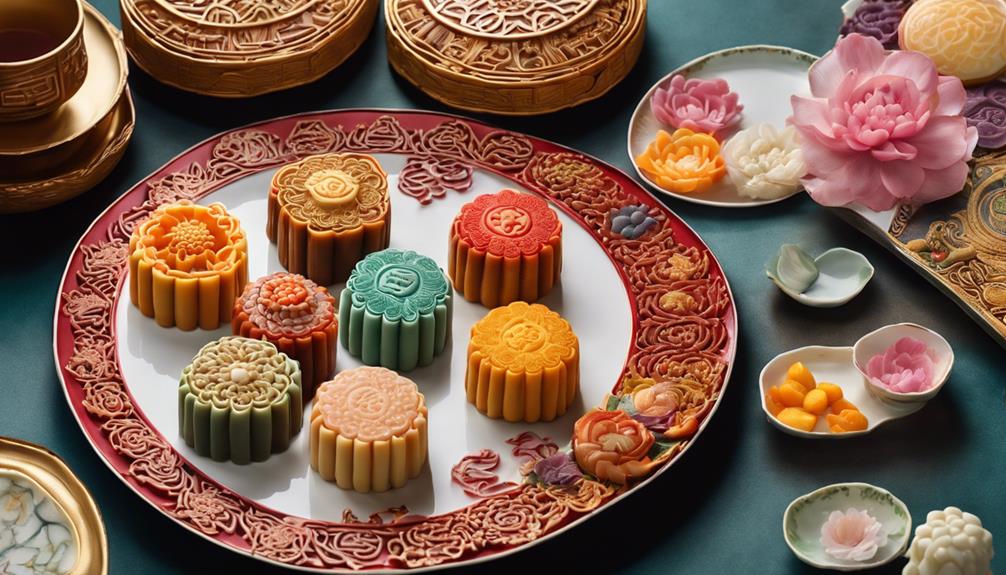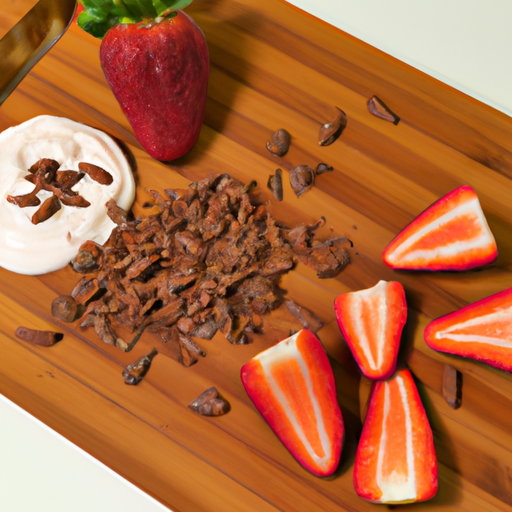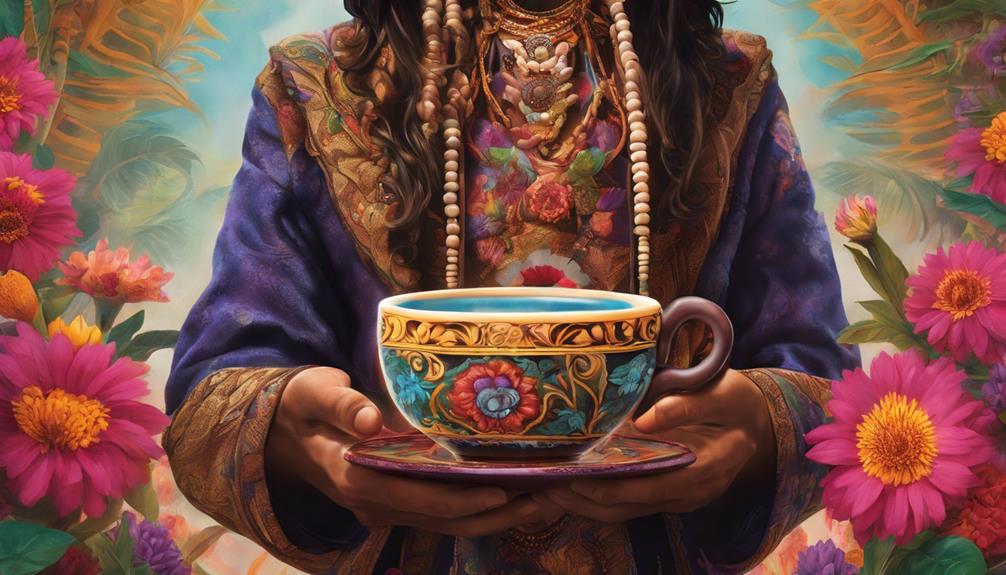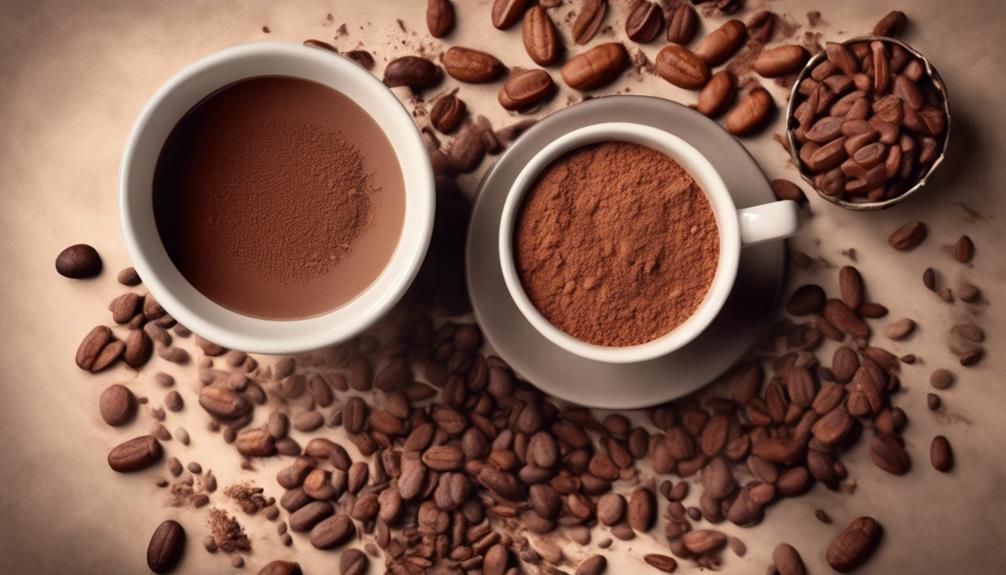Have you ever wondered about the origins and benefits of raw cacao beans? Well, let me take you on a journey into the fascinating world of these magical beans.
Picture yourself walking through a lush tropical rainforest, surrounded by towering cacao trees with their vibrant green leaves and colorful pods dangling from their branches. As you reach out to pluck a pod from the tree, you can feel the excitement building within you, knowing that inside lies the key to a world of flavors and health benefits.
Raw cacao beans, also known as the ‘food of the gods,’ have a rich history dating back thousands of years. They were cherished by ancient civilizations for their incredible nutritional properties and were even used as currency. Today, these beans continue to captivate us with their unique characteristics and versatility.
In this article, we will explore the journey of raw cacao beans from tree to table, uncovering the secrets of their nutritional benefits and delving into the differences between raw cacao beans and processed chocolate. So, grab a cup of hot cocoa and join me as we unravel the wonders of raw cacao beans together.
Key Takeaways
- Raw cacao beans are high in antioxidants, fiber, magnesium, and iron.
- Raw cacao beans are a versatile and nutritious ingredient.
- Raw cacao beans can be used to make raw cacao nibs, which add a rich chocolate flavor to smoothies and oatmeal, and are also packed with antioxidants, fiber, magnesium, and iron.
- Raw cacao powder, made from raw cacao beans, can be used in baking recipes like brownies and cookies, and can also be used to make hot chocolate by mixing with hot almond milk and sweetener, thereby enhancing the nutritional value in baking recipes.
The History and Origins of Cacao Beans
The history of cacao cultivation dates back thousands of years to the ancient civilizations of Mesoamerica, such as the Mayans and Aztecs. These cultures revered cacao and considered it a sacred plant with immense cultural significance. Cacao beans were used not only as a currency but also in religious rituals, as a symbol of fertility, and even in medicinal remedies. The cultivation of cacao beans played a pivotal role in shaping the social and economic fabric of these ancient societies.
Now, let’s dive into the characteristics and varieties of cacao beans.
The Characteristics and Varieties of Cacao Beans
Imagine yourself holding a small, brown pod filled with tiny, flavorful treasures waiting to be discovered. Raw cacao beans, derived from the Theobroma cacao tree, possess distinct characteristics and come in various varieties. Here are some key features to consider:
- Flavor: Cacao beans exhibit a rich, intense taste profile, ranging from fruity and floral to nutty and earthy.
- Color: The color of cacao beans can vary, with some being deep brown or purple, while others have a lighter shade.
- Size: These beans are relatively small, usually measuring around 1-3 centimeters in length.
- Texture: Raw cacao beans have a firm and crunchy texture, owing to their high fat content.
Now, let’s delve into the nutritional benefits of raw cacao beans, exploring the numerous ways they can enhance our well-being.
The Nutritional Benefits of Raw Cacao Beans
Indulge in the exquisite taste and health-boosting properties of these delectable treasures, derived from the Theobroma cacao tree. Raw cacao beans are not only a delicious treat, but they also offer a wide range of nutritional benefits. Packed with antioxidants, vitamins, and minerals, these beans are a powerhouse of nutrients. Here is a table showcasing the nutritional value of raw cacao beans:
| Nutrient | Amount per 100g |
|---|---|
| Fiber | 33g |
| Iron | 15mg |
| Magnesium | 550mg |
| Flavonoids | 3,448mg |
| Polyphenols | 2,185mg |
These nutrients contribute to improved heart health, reduced inflammation, and enhanced brain function. Additionally, raw cacao beans are known to boost mood and increase energy levels. These health benefits have been recognized and cherished by ancient civilizations. Transitioning into the next section, cacao beans have played a significant role in the customs and traditions of these ancient societies.
The Role of Cacao Beans in Ancient Civilizations
Step back in time and explore the fascinating role that cacao beans played in the ancient civilizations, as these little treasures were cherished like gold and used in sacred rituals and ceremonies. The cultural significance of cacao beans in ancient rituals cannot be understated. Here are three ways cacao beans were integrated into the fabric of these ancient societies:
-
Offering to the Gods: Cacao beans were considered a divine gift, often offered to deities during religious ceremonies.
-
Currency and Trade: Cacao beans served as a form of currency and were used in trade among ancient civilizations.
-
Beverage of the Elite: Cacao beans were used to make a rich and bitter drink enjoyed by the elite, symbolizing wealth and power.
Today, cacao beans continue to play a significant role in modern cuisine and are enjoyed in various forms, such as chocolate. The cultural legacy of cacao beans lives on, connecting us to our ancient past.
Now, let’s delve into the process of harvesting and fermenting cacao beans.
The Process of Harvesting and Fermenting Cacao Beans
As farmers in tropical regions carefully pluck ripe pods from towering cacao trees, they begin the intricate process of transforming nature’s treasure into the delectable treat we know and love.
The harvesting process involves cutting the pods from the trees and carefully opening them to extract the cacao beans nestled inside. Once harvested, the beans are placed in large fermentation boxes, where they undergo a crucial stage of the process.
Fermentation is a natural chemical reaction that occurs when the beans are exposed to heat and humidity. During this process, enzymes break down the pulp surrounding the beans, developing the rich flavors we associate with chocolate.
After fermentation, the beans are dried and then shipped to chocolate makers around the world. This sets the stage for the subsequent section about the chocolate-making process from cacao beans to chocolate bars, where the beans are transformed into the final product we all enjoy.
The Chocolate-Making Process from Cacao Beans to Chocolate Bars
Once the harvested cacao undergoes fermentation and drying, it embarks on a journey that transforms it into the delectable chocolate bars we all savor. The chocolate-making process involves a series of intricate techniques that require precision and expertise.
First, the fermented and dried cacao beans are roasted to bring out their rich flavors. Then, the beans are ground into a paste called chocolate liquor, which is further processed to separate the cocoa solids from the cocoa butter.
The cocoa solids are then refined and conched, a process that involves grinding and smoothing the particles to achieve a smooth texture. Finally, the refined chocolate is tempered, cooled, and molded into bars.
Besides its irresistible taste, consuming cacao beans has numerous health benefits, such as being a rich source of antioxidants and containing minerals like magnesium and iron.
Transitioning into the next section, it is important to understand the difference between raw cacao beans and processed chocolate.
The Difference Between Raw Cacao Beans and Processed Chocolate
After learning about the chocolate-making process, it’s important to understand the difference between raw cacao beans and processed chocolate.
Raw cacao beans are the purest form of chocolate, obtained directly from the cacao tree. They’re packed with nutrients and antioxidants, making them a superfood. Raw cacao beans contain higher levels of flavonoids, which have been linked to numerous health benefits such as improved heart health and reduced inflammation.
On the other hand, processed chocolate, like the chocolate bars we commonly consume, undergoes various steps that often involve high heat, additives, and preservatives. This processing diminishes the nutritional value of the cacao beans and adds unnecessary sugars and fats. Additionally, the production of processed chocolate often has a significant environmental impact due to deforestation, pesticide use, and carbon emissions.
Transitioning into the next section, let’s explore how to incorporate raw cacao beans into your diet without compromising their health benefits.
How to Incorporate Raw Cacao Beans into Your Diet
To fully harness the health benefits of raw cacao, you can easily incorporate it into your diet in various delicious ways.
One simple way is to add raw cacao nibs to your morning smoothie or oatmeal. These crunchy bits not only provide a rich chocolate flavor but also pack a nutritional punch, high in antioxidants, fiber, and minerals like magnesium and iron.
Another option is to use raw cacao powder in your baking recipes, like brownies or chocolate cookies.
You can also make a healthy hot chocolate by mixing raw cacao powder with hot almond milk and a touch of sweetener.
Lastly, try making your own raw chocolate treats by combining melted raw cacao butter with raw cacao powder and your favorite natural sweetener.
By incorporating raw cacao beans into your diet, you can enjoy their numerous health benefits while indulging in delicious treats.
Moving forward, let’s explore the sustainable and ethical side of cacao bean production.
The Sustainable and Ethical Side of Cacao Bean Production
Discover how you can support sustainable and ethical practices in the production of cacao and make a positive impact on the industry.
Sustainable farming practices and fair trade certifications play a crucial role in ensuring the well-being of both the environment and the farmers involved in cacao bean production.
Sustainable farming practices focus on minimizing the use of chemicals and pesticides, conserving water, and promoting biodiversity. By choosing cacao beans that are grown through sustainable farming methods, you are supporting the preservation of ecosystems and the reduction of carbon emissions.
Fair trade certifications ensure that farmers receive fair wages and work in safe conditions. By purchasing cacao beans with fair trade certifications, you are contributing to the betterment of farmers’ lives and promoting social justice in the industry.
Together, we can create a more sustainable and ethical future for cacao bean production.
Frequently Asked Questions
Are raw cacao beans safe to eat?
Yes, raw cacao beans are safe to eat. They can be used in various recipes, such as smoothies, desserts, and energy bars. You can buy raw cacao beans online or at health food stores.
Can raw cacao beans be used as a substitute for chocolate in baking?
Raw cacao beans can be a great chocolate alternative in baking. They offer a deeper, richer flavor and contain more nutrients than processed chocolate. Plus, they’re packed with antioxidants and can enhance the overall health benefits of your baked goods.
How do raw cacao beans compare to cocoa powder in terms of nutritional value?
Raw cacao beans have higher nutritional value compared to processed cocoa powder. They contain more antioxidants, fiber, and minerals. Consuming raw cacao can support heart health, improve mood, and enhance cognitive function.
What are the potential health benefits of consuming raw cacao beans?
Consuming raw cacao beans can offer potential health benefits due to their high nutritional value. They are rich in antioxidants, fiber, minerals, and flavonoids, which may contribute to improved cardiovascular health and brain function.
Are there any side effects or risks associated with consuming raw cacao beans?
Are there any side effects or risks associated with consuming raw cacao beans? While raw cacao beans offer numerous health benefits, excessive consumption can lead to caffeine sensitivity, digestive issues, and interactions with certain medications. It is important to consume them in moderation and consider substitutes for chocolate.
Are Raw Cacao Beans and Raw Cacao the Same Thing?
Yes, raw cacao beans and raw cacao are indeed the same thing. The raw cacao definition refers to the seeds of the Theobroma cacao tree that have not been roasted or processed, retaining their natural nutrients and antioxidants. Enjoy the rich, pure flavor and health benefits of raw cacao in various forms.
Conclusion
In conclusion, raw cacao beans are a truly remarkable superfood that have been enjoyed for centuries. Their rich history and nutritional benefits make them a valuable addition to any diet.
It is fascinating to note that cacao beans contain more antioxidants than blueberries, making them an excellent source of free-radical fighting compounds.
Incorporating raw cacao beans into your diet is not only delicious but also a great way to support sustainable and ethical cacao bean production.
So why not indulge in the goodness of raw cacao beans and experience their numerous health benefits firsthand?

